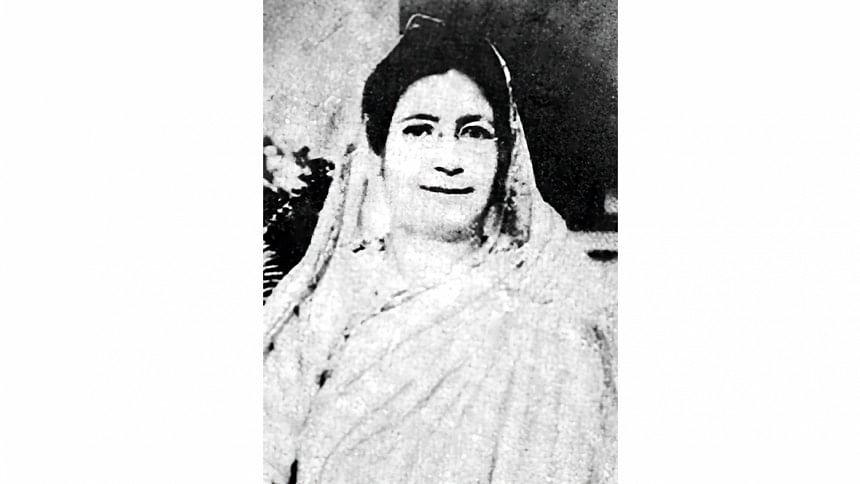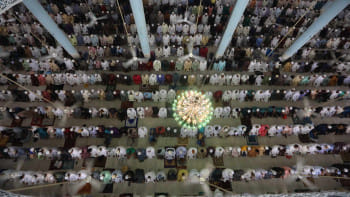Rokeya Stands Tall

Rokeya Sakhawat Hossain's (1880-1932) ancestors came from Tabriz in Iran to settle down in this region. During her lifetime, Bangladesh as an independent country did not exist. We call her a Bangladeshi writer because she was born in Pairaband, Rangpur, in what is now Bangladesh. However, the site of her activism was Calcutta.
In 1772, the British coloniser had shifted the region's capital from Murshidabad to Calcutta. Since then, Calcutta had been the capital of British India until 1912 when the coloniser moved its administrative centre to Delhi after consolidating its colonial grip on the city. By the way, Delhi was the last stronghold of Muslim rule in the subcontinent and the heart of Indo-Islamic culture for several centuries. However, Calcutta remained the cultural capital of the British Raj long after the city had lost its political edge.
Calcutta offered Rokeya the opportunity to interact with a wide variety of local and European scholars and to expand her sphere of influence intellectually, culturally and institutionally. She sought to awaken and illuminate Bengal's Muslims who were her primary audience. Although Rokeya spoke primarily Urdu at home mainly for reasons of marriage and respectability, she wrote most of her works in her native tongue, Bangla. All these make her relevant to the entire region of Bengal which includes today's Bangladesh and West Bengal of India. It was in this sense that a 2004 BBC Bangla Service survey on the greatest Bengalis of all time put Rokeya at number six. She was the only woman to make it in its list of top 20.
Rokeya is rightly celebrated as a literary scholar, social reformer and social justice activist who fought for women's rights on multiple fronts – educational, literary and political (arguably in that order of priorities). She poured all her blood, sweat and tears into the school that she established in Calcutta and campaigned for female education throughout her active life. For three decades, spanning from 1902 till the last breath of her life in 1932, she continued writing to effect social reform, especially that which concerned women. In 1916, Rokeya established the Bengal branch of Anjuman-e-Khawatin-e-Islam (Islamic Sisters' Group) which was originally founded in Aligarh in 1914. She became its Secretary General and Ayesha Khatun (wife of the writer and educationist Moulvi Abdul Karim), its President. In an essay titled "Rokeya's Dream: Feminist Interventions and Utopias" (2017), Somdatta Bhattacharya states: "In 1922, Rokeya became the president of two organizations, Narishilpa Vidyalaya (Women's Arts and Industry School) and Naritirtha (Women's Institution) to rehabilitate destitute women and prostitutes." All these indicate that Rokeya was deeply engaged in socio-political activities and assumed leadership roles within the community.
In my earlier research, I compared Rokeya with two illustrious British feminist writers – Mary Wollstonecraft and Virginia Woolf. These two women were primarily writers and, unlike Rokeya, did not work on all these three fronts (educational, literary and political). Wollstonecraft and her sister Eliza did set up a school for women at Newington Green in London in 1784, however, the principal motivation was economic. Woolf was a kind of ivory tower intellectual and is often accused of having notoriously antisocial propensities. Even though her active literary career coincided with the height of suffragist activism in Britain, she remained totally detached from any organised feminist movement. What is more, in Three Guineas (1938), she detested it, saying: "The old names as we have seen are futile and false. 'Feminism' we have had to destroy. 'The emancipation of women' is equally inexpressive and corrupt."
Conversely, Rokeya worked on multiple dimensions at once and left no stone unturned to liberate women. Hence, in the annals of feminist literary history, she occupies a special place owing to her great and many-sided contribution to women's causes and the tenacity and intensity of her focus on feminist concerns.
In today's Bangladesh, Rokeya's iconic status is reflected among others in the fact that, 9 December, which marks her birth and death anniversaries, is a national day. It is commemorated by the government and various literary and cultural organisations, as newspapers and periodicals publish essays on her life and works on this day. However, all these commemorations should not blind us to the difficult path Rokeya had to traverse, and the oppositions she had to overcome, to promote female education and reformist causes.
In what follows, I mention two anecdotes to describe the hostility to female education that existed in the inner consciousness of the Indian psyche around Rokeya's time.
In "Sayyid Mumtaz Ali and 'Huquq un-Niswan': An Advocate of Women's Rights in Islam in the Late Nineteenth Century" (1990), Gail Minault mentions that in the late 1890s, the great advocate of women's rights Sayyid Mumtaz Ali met Sir Sayyid Ahmad Khan in Aligarh which was the centre of the latter's educational activities. Mumtaz Ali showed Sir Sayyid the manuscript of his book Huquq un-Niswan (Rights of Women) which he wrote to advocate women's educational opportunities and other rights within the framework of Islam. As he opened the work and began reading "Sir Sayyid looked shocked. He then opened it to a second place and his face turned red. As he read it at a third place, his hands started to tremble. Finally, he tore up the manuscript and threw it into the wastepaper basket." At that time Sir Sayyid had to leave for lunch. In his absence, Mumtaz Ali managed to salvage the "mutilated manuscript from the trash." He published it only after Sir Sayyid's death in 1898.
The above incident should not be read as an example of Sir Sayyid's lack of support for female education. In an article titled "Sir Syed's Views on Female Education" (1996), Fatima Z. Bilgrami defends Sir Sayyid and argues that he was "aware of the need of women's education." However, the social setting was so hostile to it that he did not dare to include it in his widespread movement for Muslim education, thinking that "the movement would die if girls' education was taken up along with the boys.'"
Rokeya's eldest sister Karimunnesa once stealthily got hold of a book of her brother's and began to read, on discovery of which her father became alarmed and dreaded public obloquy and vilification. It was feared that her reading habit might spoil her and keep her from becoming a good housewife. She was hastily married off at fourteen. Karimunnesa continued clandestine reading in her in-laws' house. Her thirst for learning was so acute that she started learning Arabic at sixty-seven when the opportunity arrived.
Despite such hostility to female education all around the subcontinent, Rokeya did not give in. She waged a persistent struggle for female education braving the social norms and barriers that dictated an all-male presence in education and stood between women and intellectual culture. She did not believe in any disparity or discipline differences between male and female education and sought women's access invariably to all branches of knowledge.
For these and many other reasons, Rokeya's greatness as a social thinker and advocate of women's rights may remain unsurpassed for a long period to come. People who use feminism to vent their prejudices and to satisfy their predilections may come and go, but Rokeya's sincerity, courage, hard work and sense of purpose will stand tall and long.
Md. Mahmudul Hasan teaches and researches English and postcolonial literature at International Islamic University Malaysia. He edited (with Mohammad A. Quayum) A Feminist Foremother: Critical Essays on Rokeya Sakhawat Hossain (2017).

 For all latest news, follow The Daily Star's Google News channel.
For all latest news, follow The Daily Star's Google News channel. 



Comments